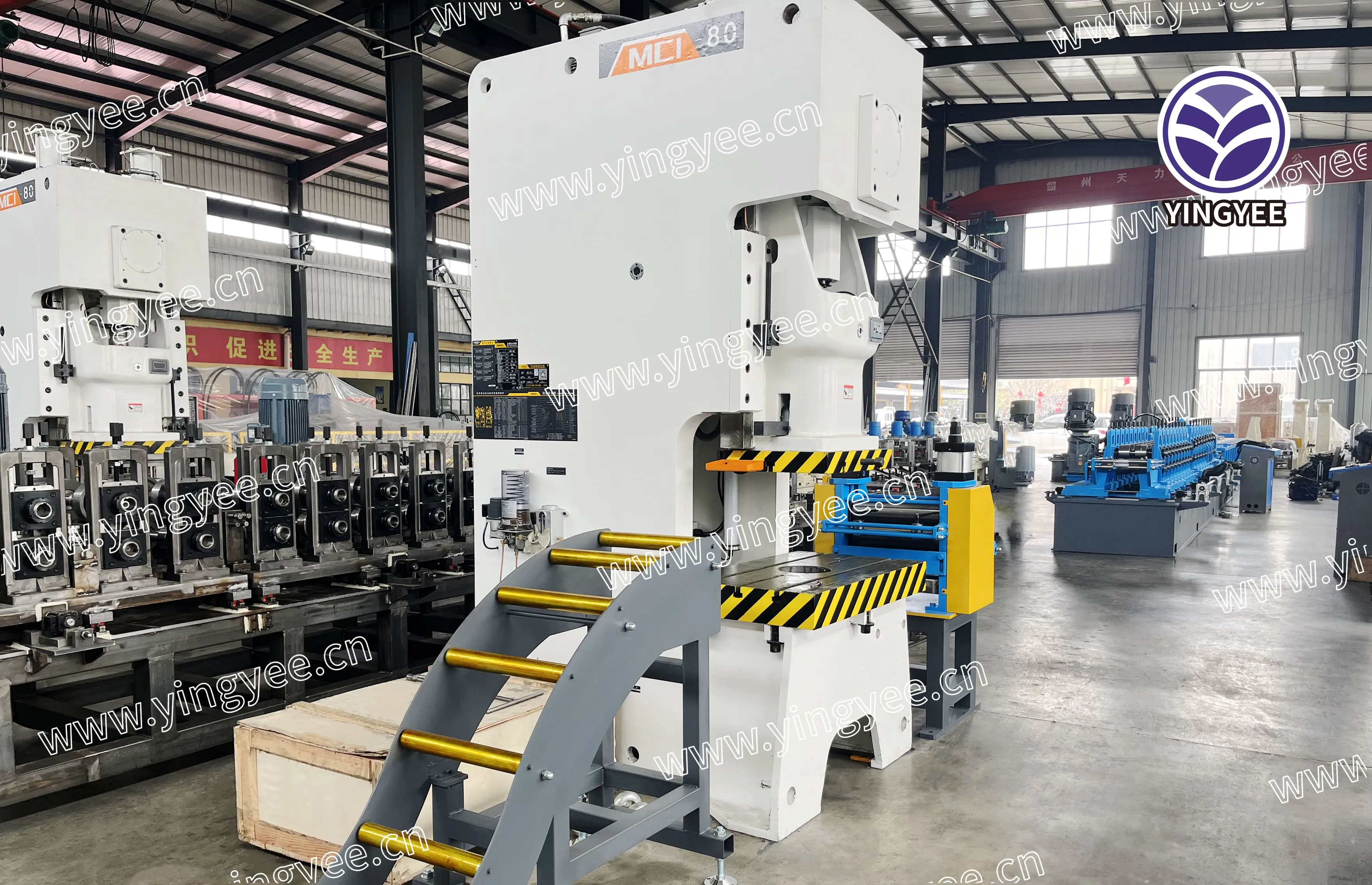
Rack Roll Forming An Overview of a Key Manufacturing Process
Rack roll forming is a specialized manufacturing process used to create intricate shapes and profiles from metal sheets or strips. This method is particularly popular in the production of racks used in warehouses, industrial settings, and even in retail environments. By understanding the fundamentals of rack roll forming, we can appreciate its significance in modern manufacturing and its impact on efficiency and versatility.
Understanding Roll Forming
To grasp the concept of rack roll forming, it's essential first to understand roll forming as a process. Roll forming involves the continuous bending of a long strip of metal into a desired cross-sectional shape. The process uses a series of rollers, each designed to progressively bend the metal until it reaches the final shape. This method is utilized for various applications, providing a cost-effective solution for high-volume production.
The Process of Rack Roll Forming
Rack roll forming starts with feeding a flat strip of metal, commonly steel or aluminum, into a series of rollers. Each roller is strategically positioned to bend the metal at specific angles and shapes, which ultimately results in the desired rack profile.
1. Material Preparation The process begins with selecting the appropriate material, often pre-galvanized or coated to enhance durability and corrosion resistance.
2. Roll Design The design of the rollers is pivotal. Engineers and designers must create rollers tailored to achieve the exact specifications of the rack. The roller design significantly influences the formability of the metal and the efficiency of the process.
3. Setting Up the Machine Once the rollers are crafted, they are mounted in a roll forming machine, and the metal strip is fed through.
4. Bending the Metal As the strip passes through the rollers, the gradual bending process begins. Each roller adjusts the metal's shape incrementally, eventually producing a continuous length of the desired profile.
5. Cutting and Finishing Once the desired length of rack is formed, the material is cut and may undergo additional finishing processes, such as welding or surface treatment, to optimize strength and provide a clean appearance.

Benefits of Rack Roll Forming
The rack roll forming process offers numerous advantages, making it a preferred choice for manufacturers
1. Efficiency The continuous nature of roll forming allows for high-speed production, significantly reducing lead times. This is especially critical for industries that rely heavily on timely deliveries.
2. Consistency and Precision Roll forming maintains consistent dimensions and tolerances, ensuring that each rack produced meets exact specifications. This precision reduces the likelihood of errors and rework.
3. Material Utilization The roll forming process optimally uses material, minimizing waste. It allows for the nesting of shapes that can be produced from the same strip, further enhancing material efficiency.
4. Versatility Rack roll forming can accommodate various designs and profiles, allowing manufacturers to create customized solutions for different applications. This adaptability caters to the unique needs of various industries.
5. Strength and Durability The racks produced through this process are inherently strong, making them suitable for heavy-duty applications. The continuous steel formations provide structural integrity that is ideal for storage and shelving solutions.
Applications of Rack Roll Forming
Rack roll forming finds applications across diverse sectors. In warehouses, it is used to create pallet racks, shelving systems, and storage units that optimize space and improve accessibility. In retail, roll-formed racks can serve as display fixtures that enhance product visibility and organization. Additionally, industries involved in logistics and transportation benefit from custom rack solutions designed to safeguard products during transit.
Conclusion
In today’s fast-paced manufacturing landscape, rack roll forming stands out as a vital process that combines efficiency, precision, and versatility. By understanding and leveraging this technology, manufacturers and industries can produce high-quality storage solutions that meet the ever-evolving demands of markets worldwide. As the industry continues to innovate, the role of rack roll forming will only become more pronounced, paving the way for enhanced productivity and design possibilities in metal manufacturing.